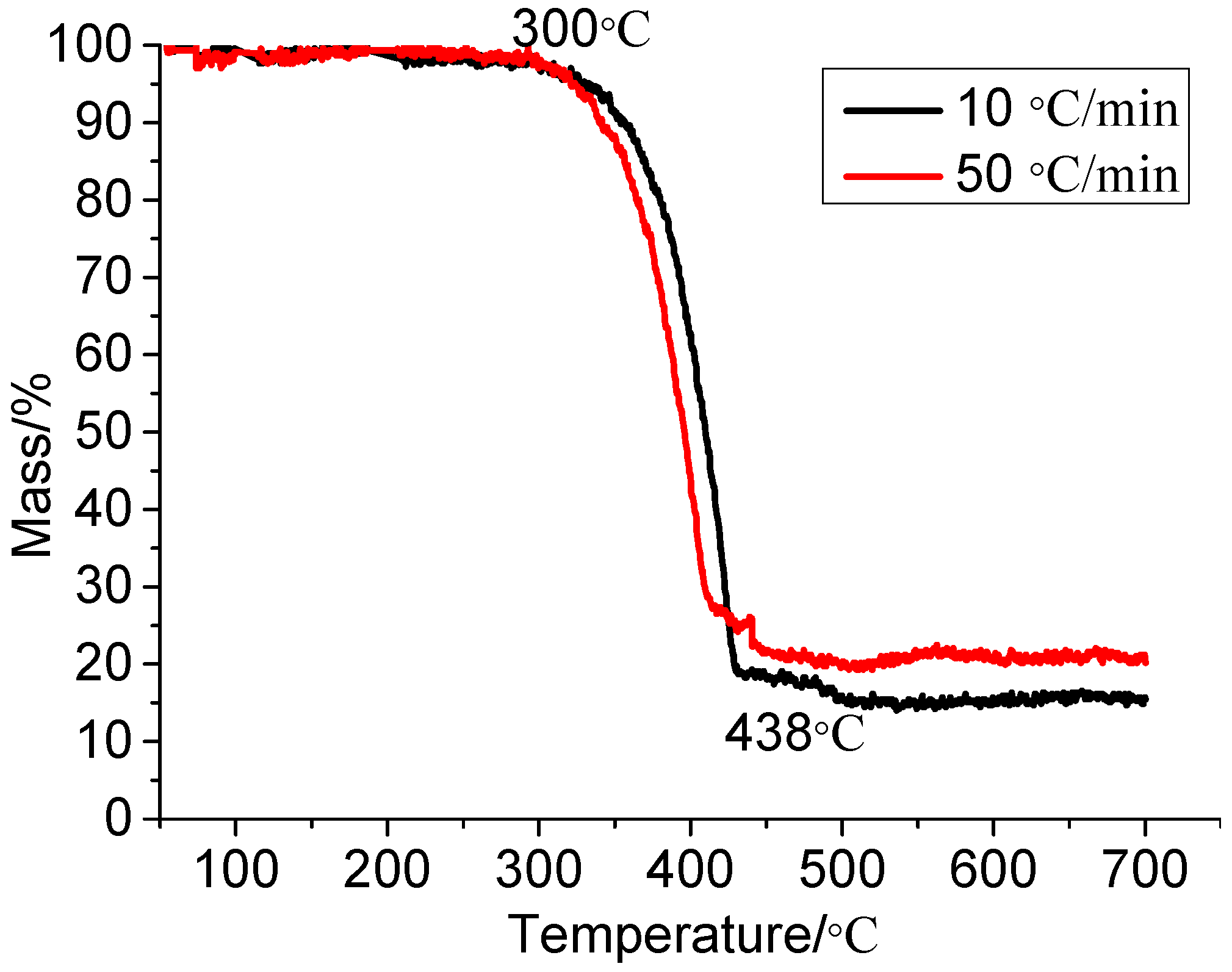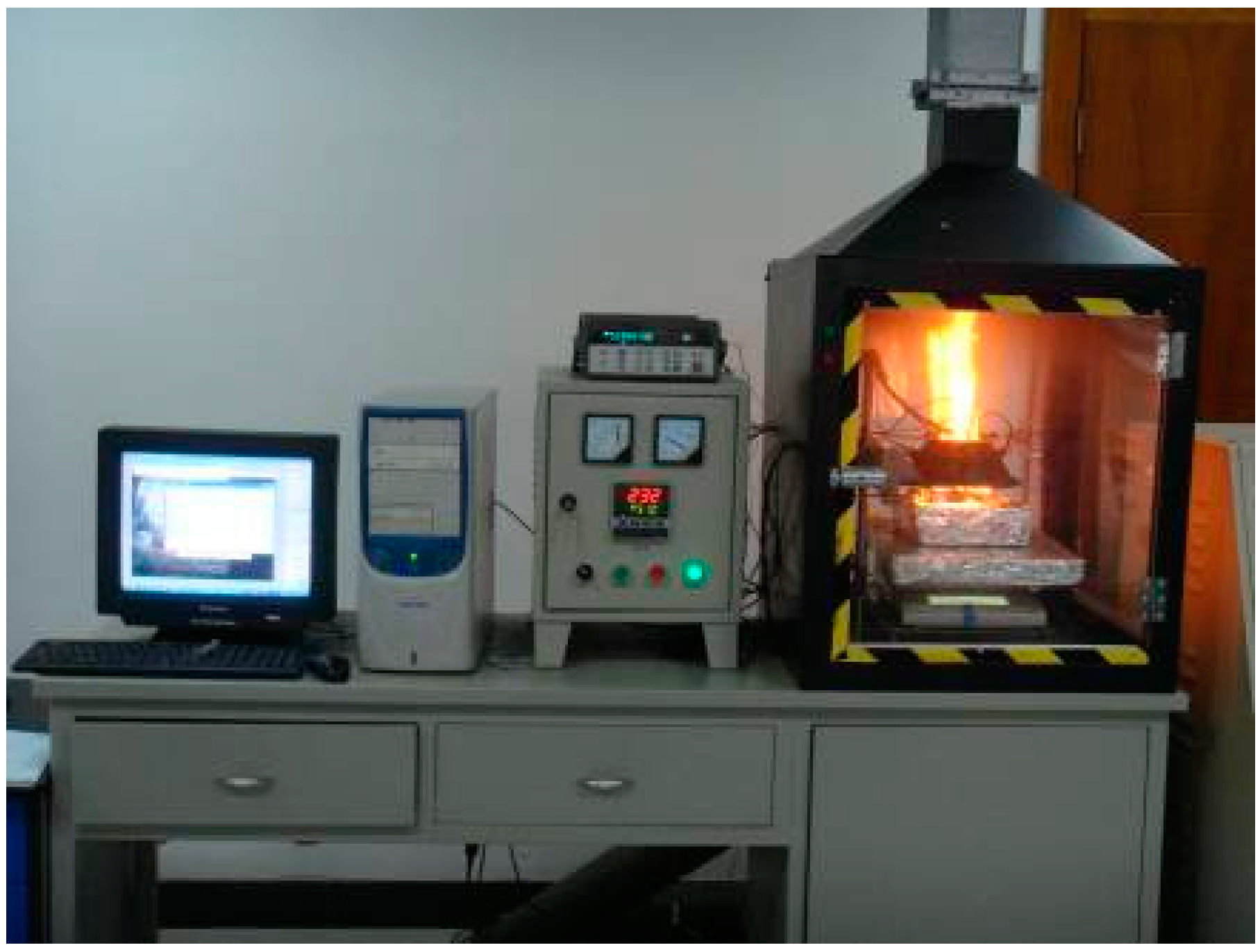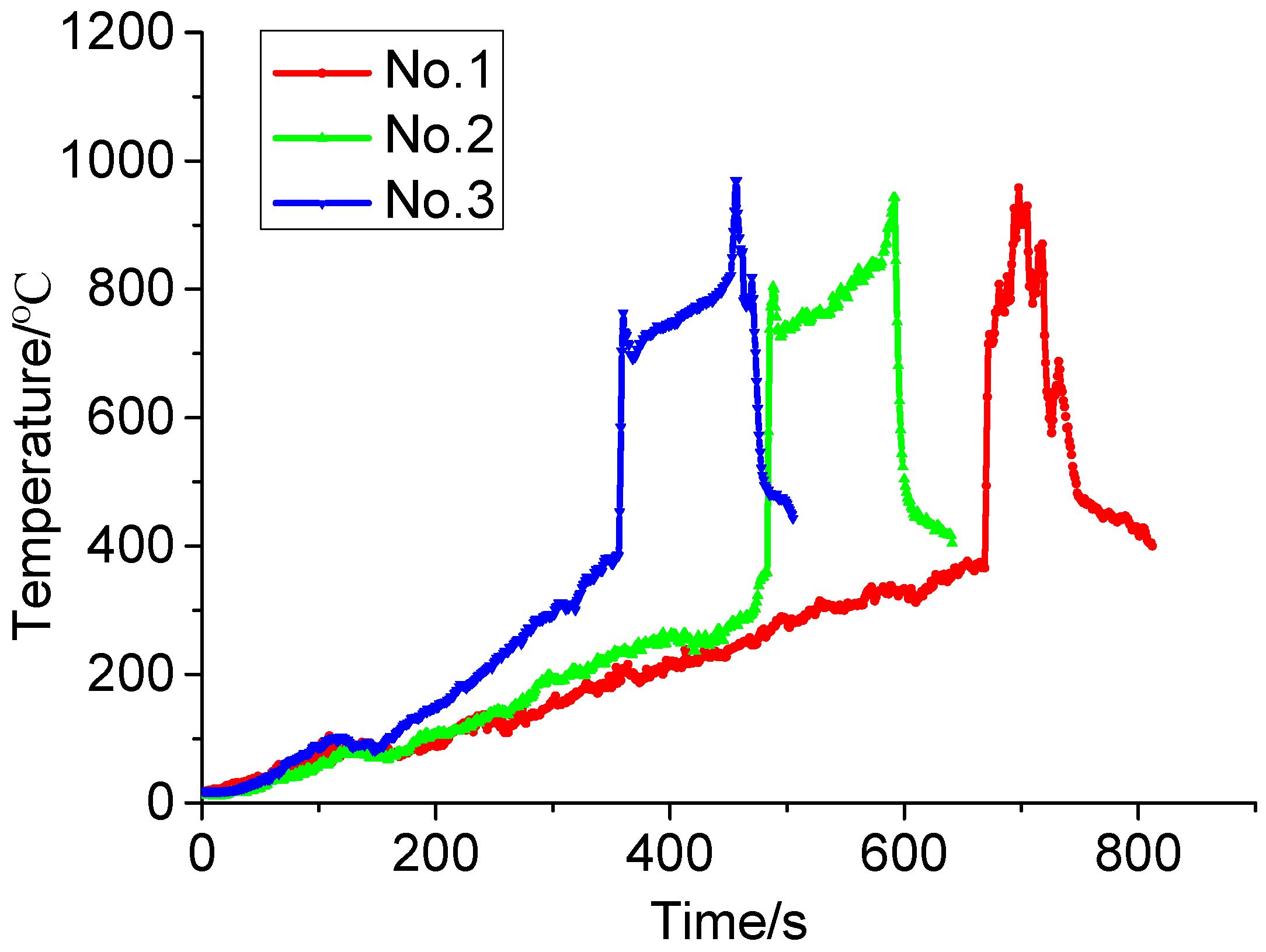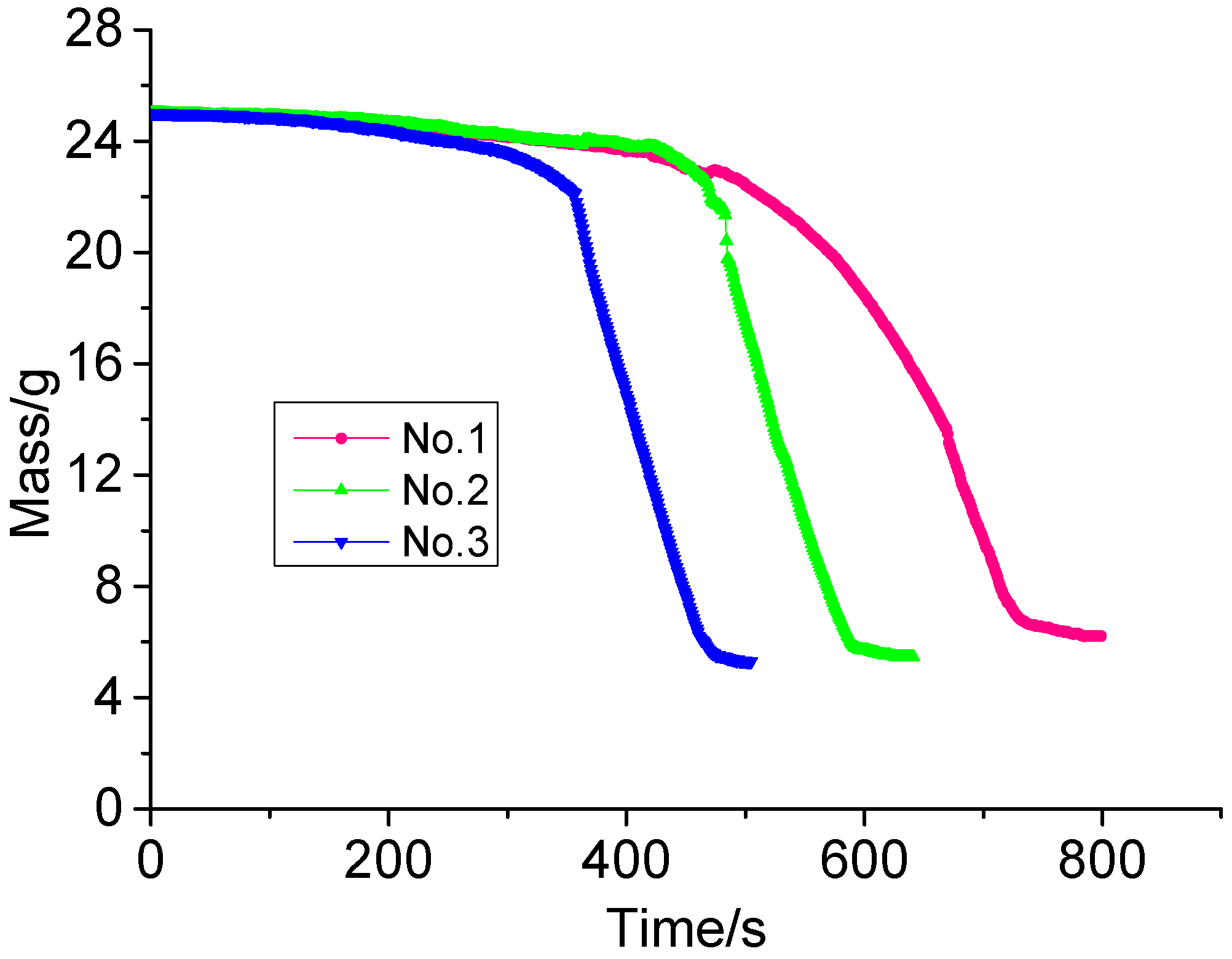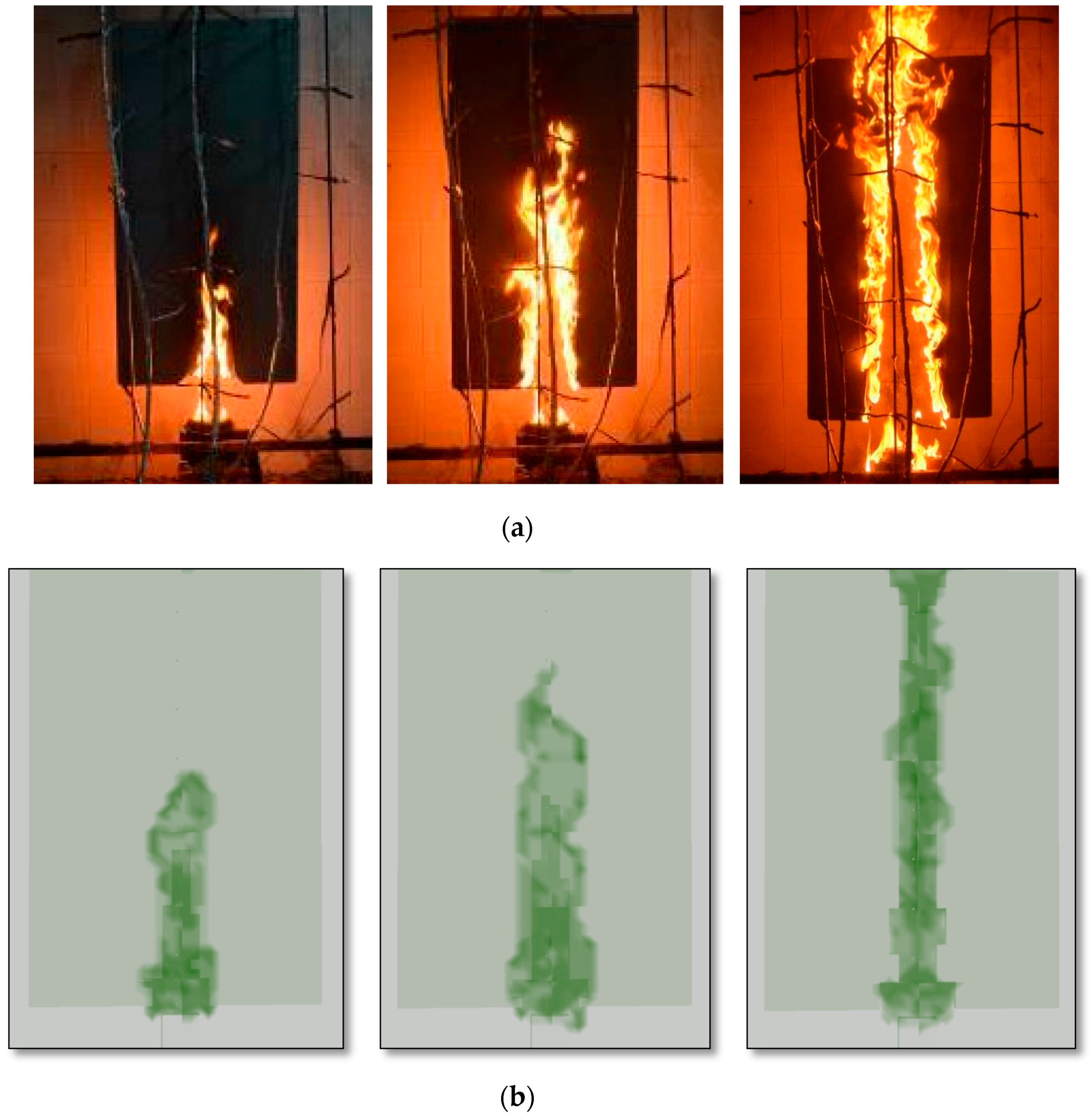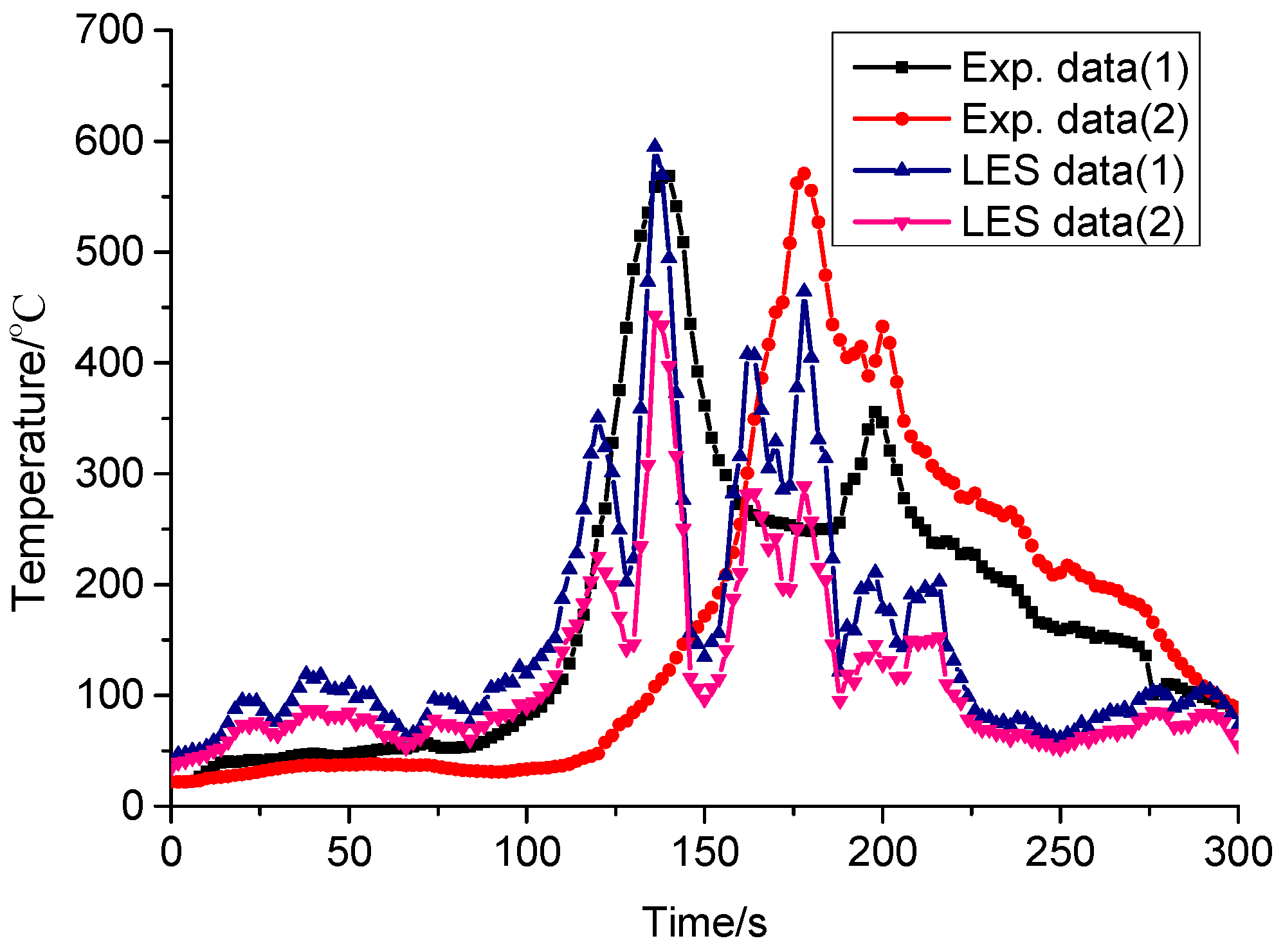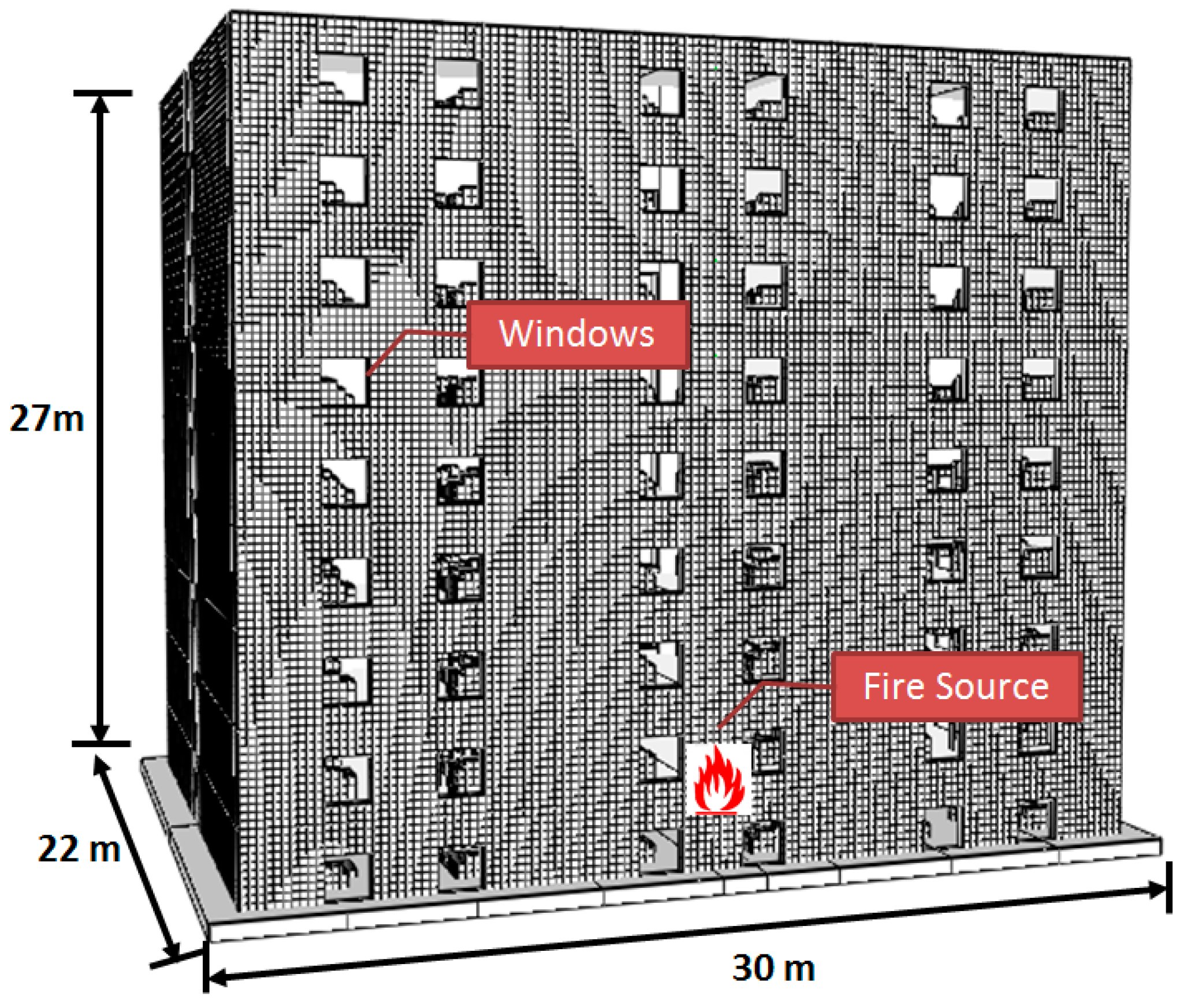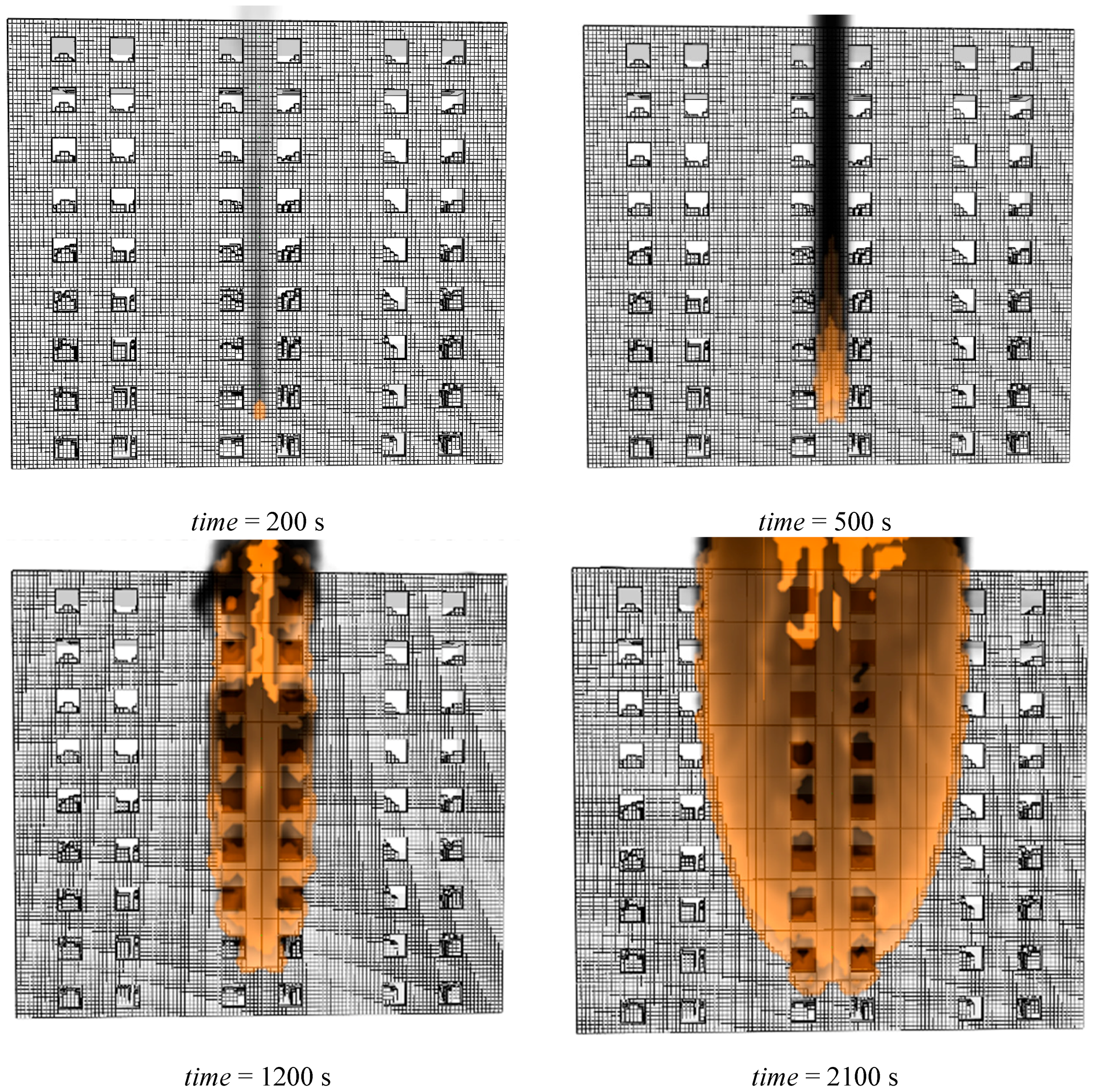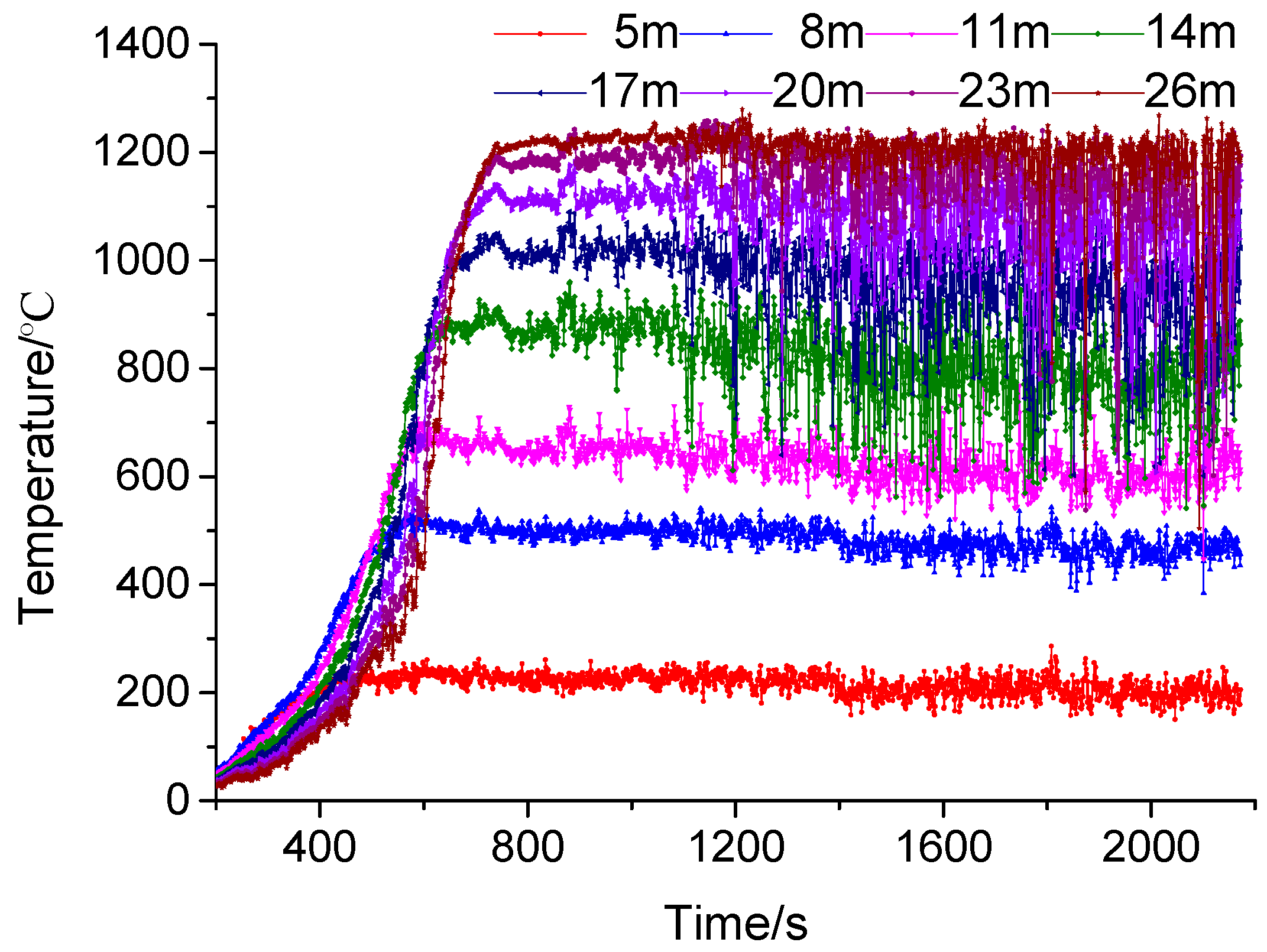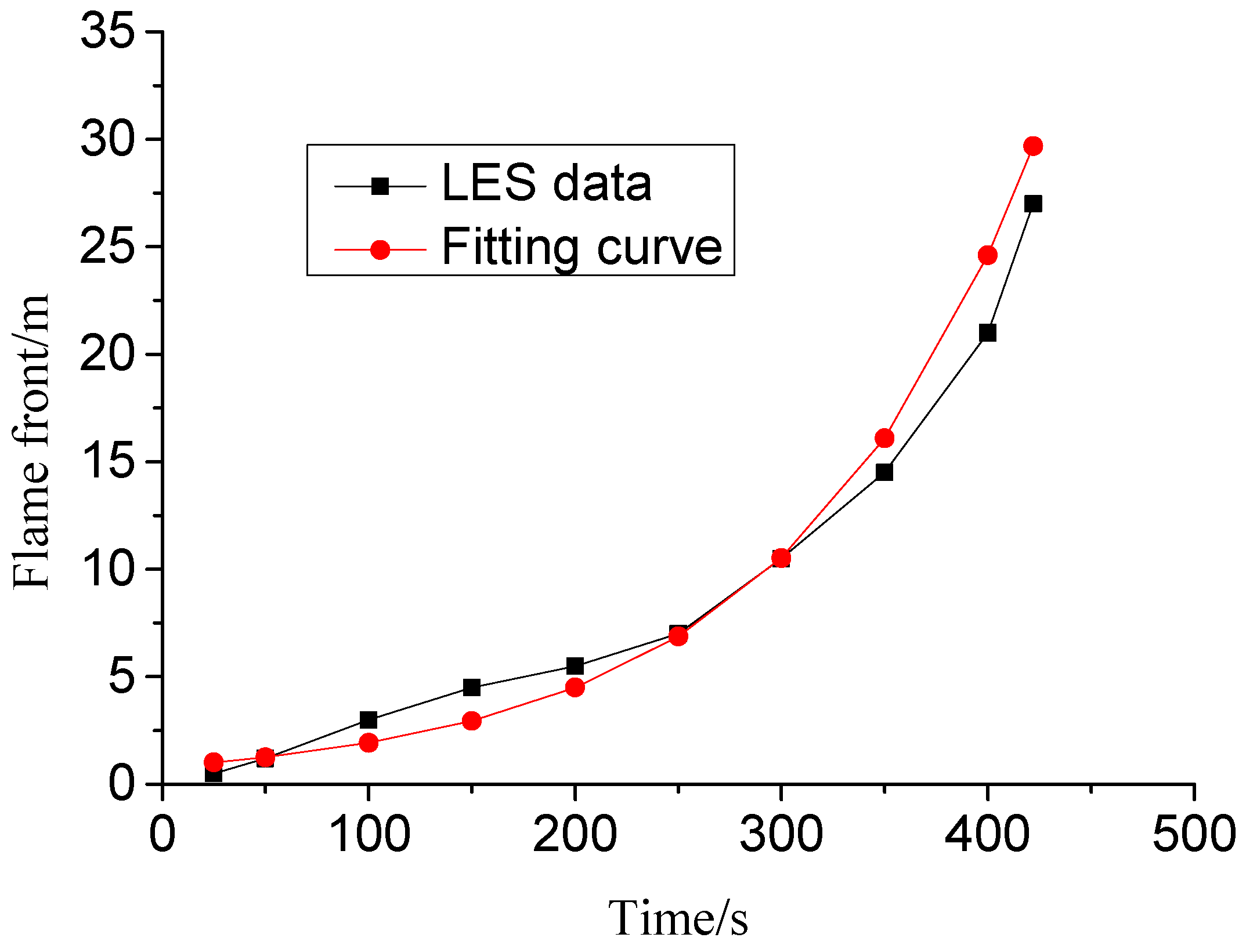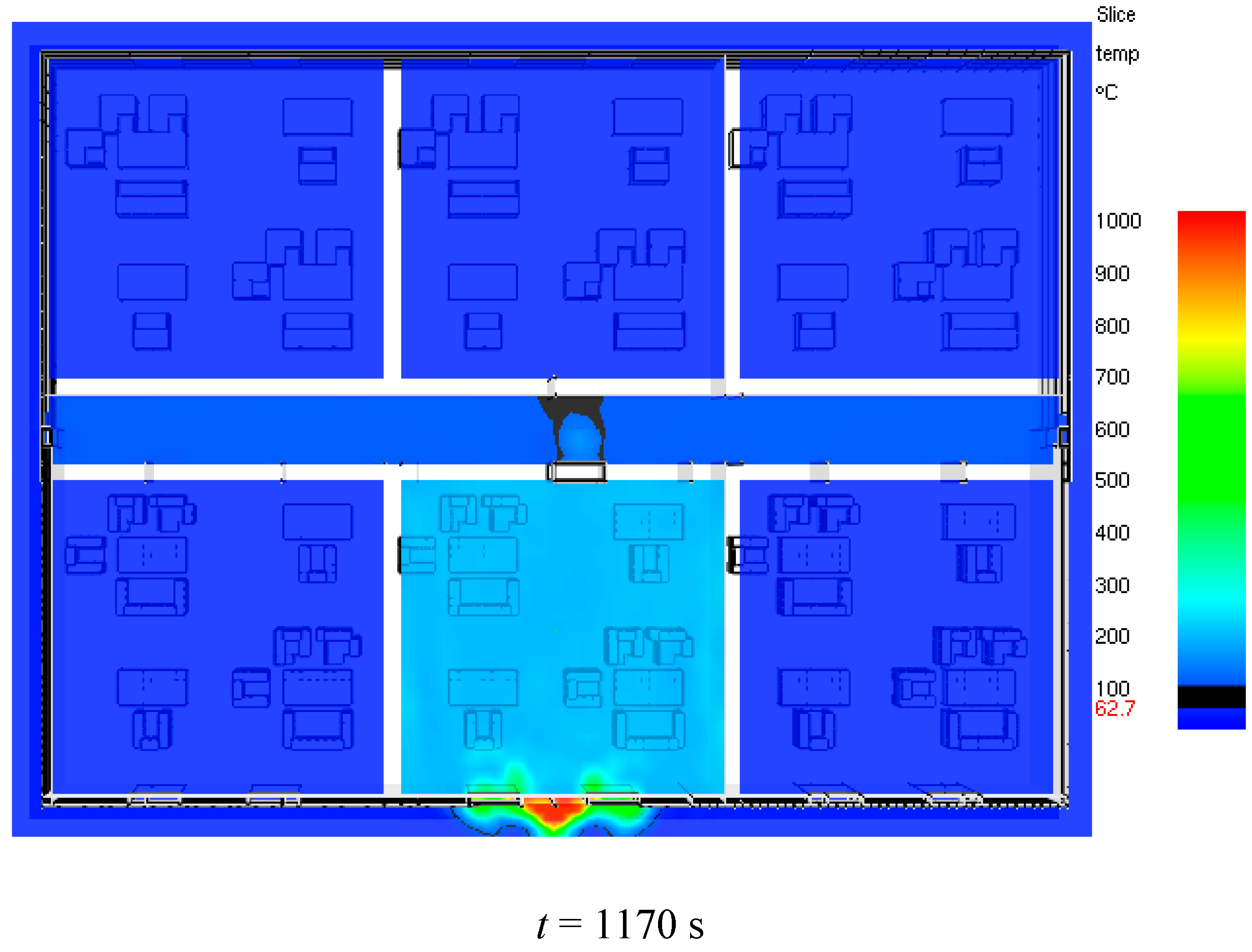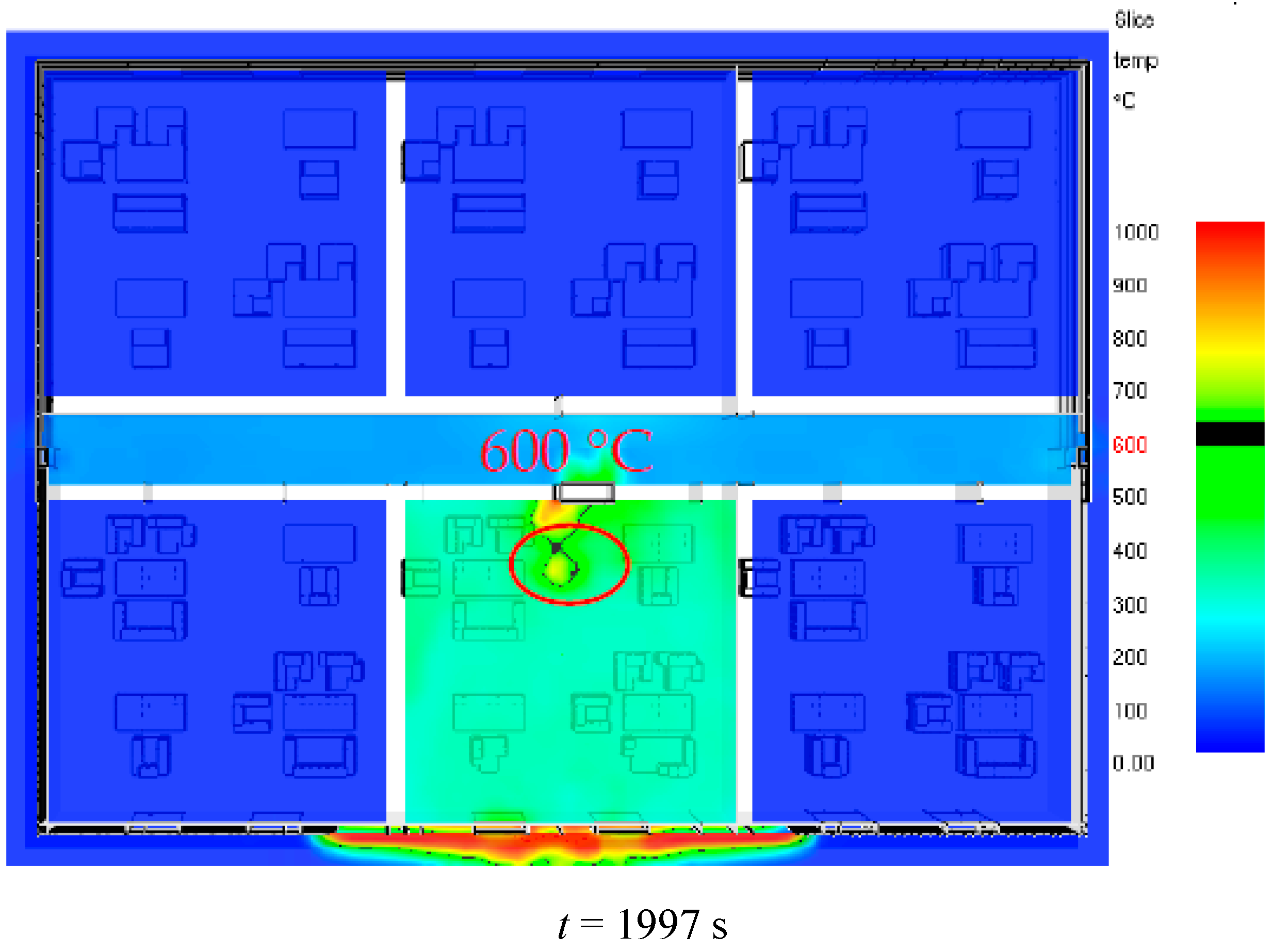1. Introduction
With the Government of China’s proposed Energy Efficiency Regulations (Code for Acceptance of Energy Efficient Building Construction GB40411-2007), external insulation systems will be mandatorily implemented in China. At present, the common external insulation materials in China mainly consist of organic insulation materials (such as extruded polystyrene (XPS panel) insulation board, expandable polystyrene (EPS panel) board and polyurethane (PU), etc.) and inorganic insulation materials (such as rock wool, inorganic fibre, etc.). Because of its low cost and good insulation performance, XPS panel is the most common insulation material in China. Although XPS panel has good insulation performance, its fire resistance is poor, which explains the nearly one hundred XPS insulation system fires that have occurred in China since 2005 [
1]. When XPS panels burn, the flames may spread upward along the building’s exterior and spread into enclosures through vents (such as windows and doors). As a result, in tall buildings insulation fires are not simply limited to a single-layer or multi-layer fire, but rather will spread vertically and horizontally and eventually cause the three-dimensional combustion of the whole building. Among these external insulation fires, the China Central Television (CCTV) center fire which occurred in 2009 caused the death of a fireman and 26.5 million U.S. dollars in direct economic losses [
1]. A Shanghai teacher’s apartment fire in 2010 caused 58 deaths and 25.8 million U.S. dollars in direct economic losses [
1] and the Shenyang Wanxin hotel fire occurred in 2011 caused 483.8 million U.S. dollars in direct economic losses [
1].
Frequent external insulation material fires thus cause huge casualties, large property damage and social panic and have rapidly becomes a new hot issue which has aroused great concern from a majority of fire scholars in China. Research on external thermal insulation material fires is still mainly focused on the materials’ pyrolysis and combustion characteristics using lots of cone calorimeter or medium size experiments [
2,
3,
4,
5,
6,
7]. Lefebvre dealt with the fire properties of flexible polyurethane foams and provided basic correlations between some existing fire test methods and the data recorded under cone calorimeter conditions [
8]. Lautenberger proposed a generalized pyrolysis model which is applied to simulate the oxidative pyrolysis of white pine slabs irradiated under nonflaming conditions. Conservation equations for gaseous and solid mass, energy, species, and gaseous momentum (Darcy’s law approximation) inside the decomposing solid are solved to calculate profiles of temperature, mass fractions, and pressure inside the decomposing wood. The prosed calculations reproduce well the experimental data [
9,
10]. Chaos presented an approach which involves complex-step differentiation to compute the normalized first-order local sensitivity coefficients of relevant model outputs with respect to the inputs, i.e., the material properties. The proposed approach is both systematic and robust and provides sensitivity coefficients that are dynamic; that is, sensitivity values are given as a function of time for the entire pyrolysis process [
11]. He also presented lots of analyses aimed at evaluating the plausibility of obtaining material properties numerically from pyrolysis data collected in a Fire Propagation Apparatus (FPA) [
12]. Stoliarov presented a new computational tool, ThermaKin2D, that expands the ThermaKin model to two dimensions and combines it with a flexible analytical representation of a surface flame. This tool enables highly accurate simulations of flame spread dynamics which were verified by a series of verification exercises [
13]. Lautenberger proposed a new approach to modeling soot formation and oxidation in non-premixed hydrocarbon flames which has been developed and subjected to an initial calibration. The model considers only the phenomena essential for obtaining sufficiently accurate predictions of soot concentrations to make Computational Fluid Dynamics (CFD) calculations of fire radiation feasible in an engineering context. The soot model have been embedded within a modified version of National Institute of Standards and Technology (NIST) Fire Dynamics Simulator and used for a comparison of predicted and measured temperatures, soot volume fractions, and velocities in laminar ethylene, propylene, and propane flames [
14].
However, as stated above, due to the limitations of experimental funding and conditions, full-scale experiments to study the flame spread and smoke hazards of external insulation system fires are impossible to conduct. Especially the whole building in a three-dimensional fire caused by external insulation material fires is still rarely researched. With the rapid improvement of computer performance, considerable attention has been paid to fire simulation. Since the National Institute of Standards and Technology (NIST) released Fire Dynamics Simulator (FDS) in 2000, it has been a powerful tool for simulating the consequences of fire scenarios involving realistic geometries [
15]. For example, Chi used thermal analysis experiments and the Fire Dynamics Simulator (FDS) to reconstruct an arson fire scene. His study was based on an arson attack which occurred in Taiwan. His study used PU foam as the experimental material and utilized thermal analysis equipment to obtain heat reaction data as input parameters for the FDS program. The results were compared and verified with the on-site fire spread and smoke debris to obtain heating temperatures which were close to the actual conditions, as well as corresponding material parameters for the reconstruction of the arson attack [
16].
In this paper, the combustion characteristics of XPS panel are experimental studied and we attempt to reconstruct an actual fire scenario and provide a risk assessment of an external insulation material fire using FDS-SMV version 6 (NIST, Washington, DC, USA). The accuracy of large eddy simulation on the upward fire spread was validated by a medium-sized extruded polystyrene insulation board (XPS panel) fire experiment. Taking a nine-story building as an example, the flame spread along an external building facade is investigated by large eddy simulation. These methods and experimental data will provide a reference and support for fire simulation and fire prevention of external insulation systems.
5. Conclusions
Combustion characteristics and fire risk of exterior insulation materials fire are researched in this paper. Ignition temperature, heat of combustion, limiting oxygen index, TG curve and ignition by thermal radiation are separately studied experimentally firstly. Based on these experimental data, large eddy simulation is applied to reconstruct an actual fire scenario and provide a risk assessment of fire spread along an external building facade made of polystyrene insulation board. Simulation methods and research results obtained in this paper could provide valuable references for public evacuation, hazard assessment and fire protection design. Based on this research, the following conclusions can be drawn:
Ignition temperature, heat of combustion and limiting oxygen index of XPS panel are separately 350 °C, 45.2 MJ/kg and 18.5%. Weight loss region of XPS panel is mainly in the 300 °C–438 °C region and the mass loss in this region accounts for 75% of the total mass. XPS mass loss rate under thermal radiation has three stages: slow pyrolysis stage, rapid reduction stage and relatively stable stage and it decreases linearly in the rapid reduction stage. Moreover, the mass loss rate of XPS panel under different heating condition is different and it is a constant value in the mass rapid reduction stage exposed to a linearly increasing heat flux.
A medium-sized XPS fire experiment was conducted to validate the accuracy of the large eddy simulation on upward fire spread. We find that the fire spread speed, surface temperatures and mass loss rate obtained by large eddy simulation methodology coincide with the experimental data, thus we believe large eddy simulation could predict well the XPS upward fire spread. Then the large eddy simulation methodology is applied to a representative nine-story building to provide a risk assessment of fire spread along an external building facade made of polystyrene insulation board. We find that the simulated fire spread area is identical to that of fire accidents occurred in China and that the external insulation material fire spread in the vertical direction is faster than that in the horizontal direction. Moreover, we also find that there is a possibility of flashover indoors as the smoke temperature exceeds 600 °C in enclosures. Thus we can believe that the insulation systems used in construction could seriously influence public safety in case of a fire. It only takes 422 s for the flame front to reach a 27 m high building roof and the fire becomes more violent and exposes evacuees and firefighters to more hot smoke and flashover during the fire process. Firefighters should note the risk of flashover during external insulation material fire rescues.
